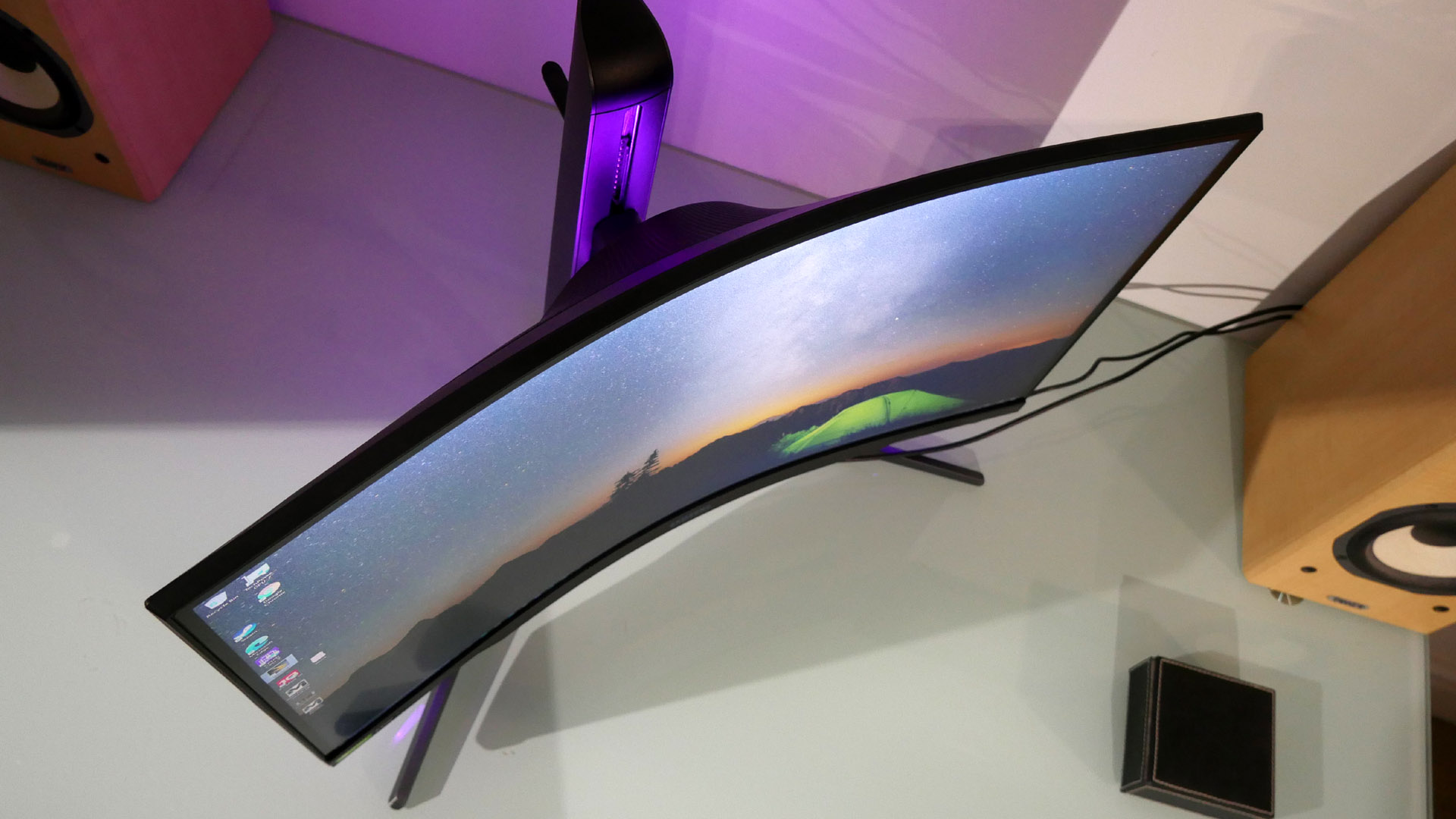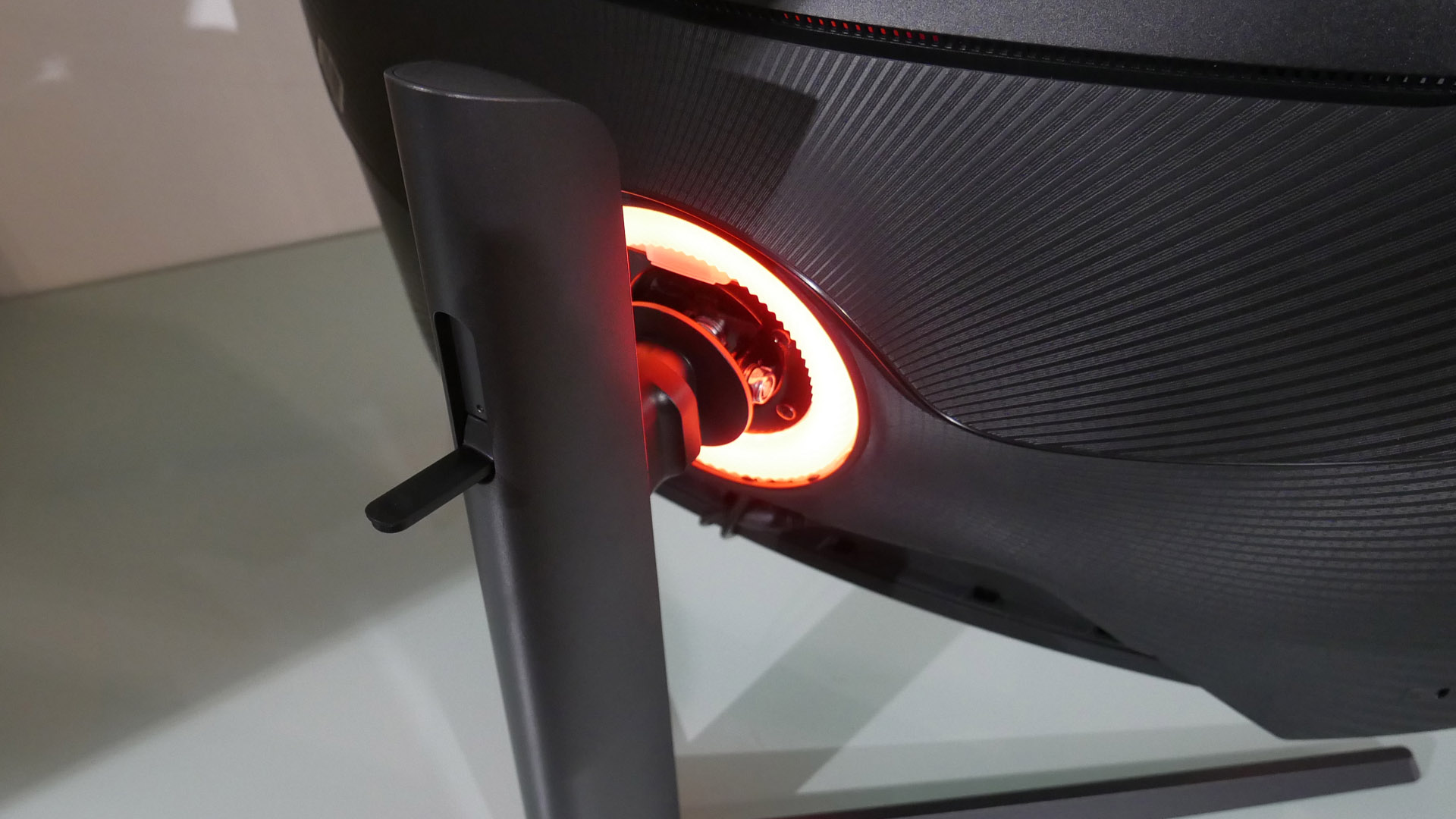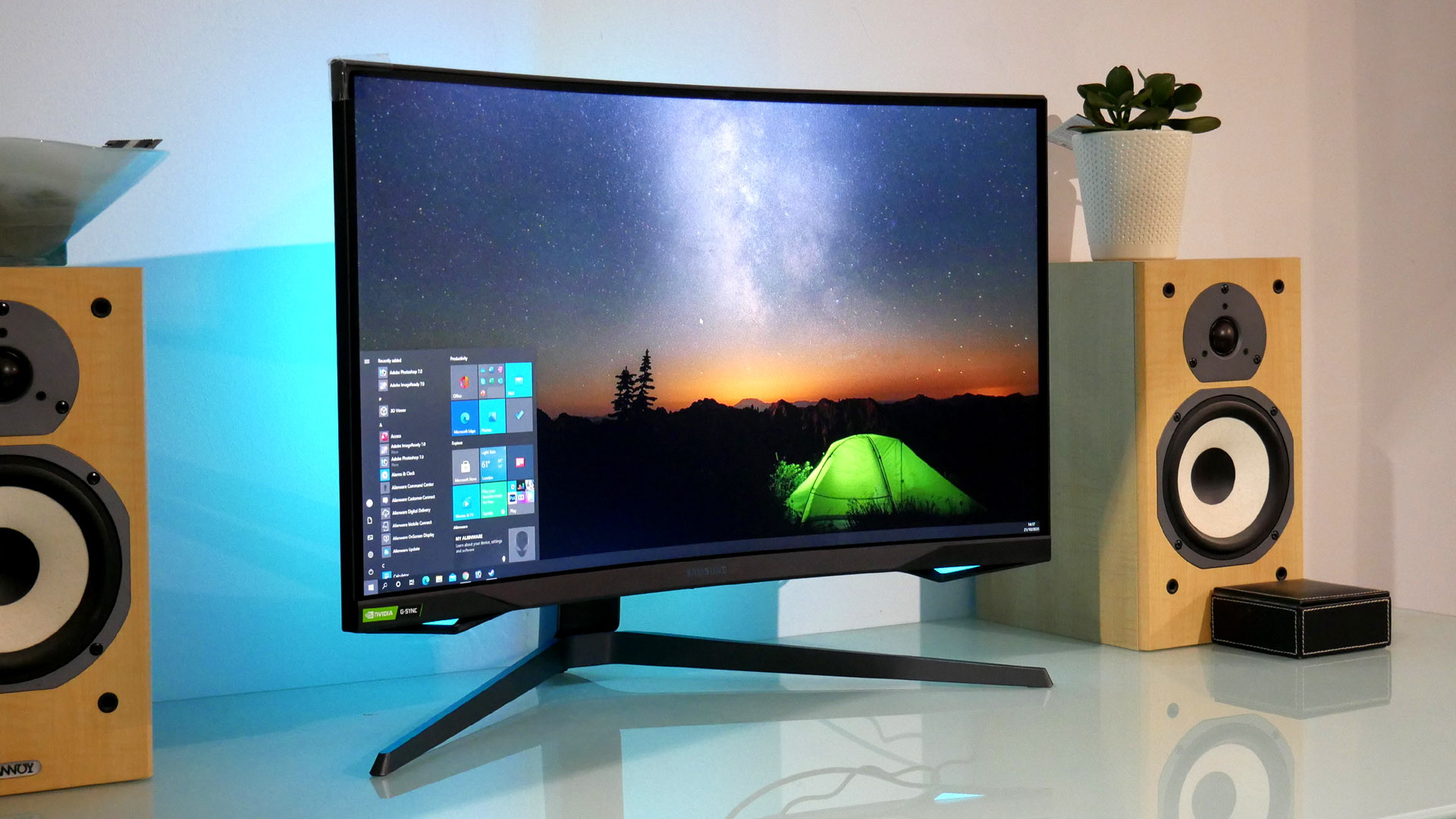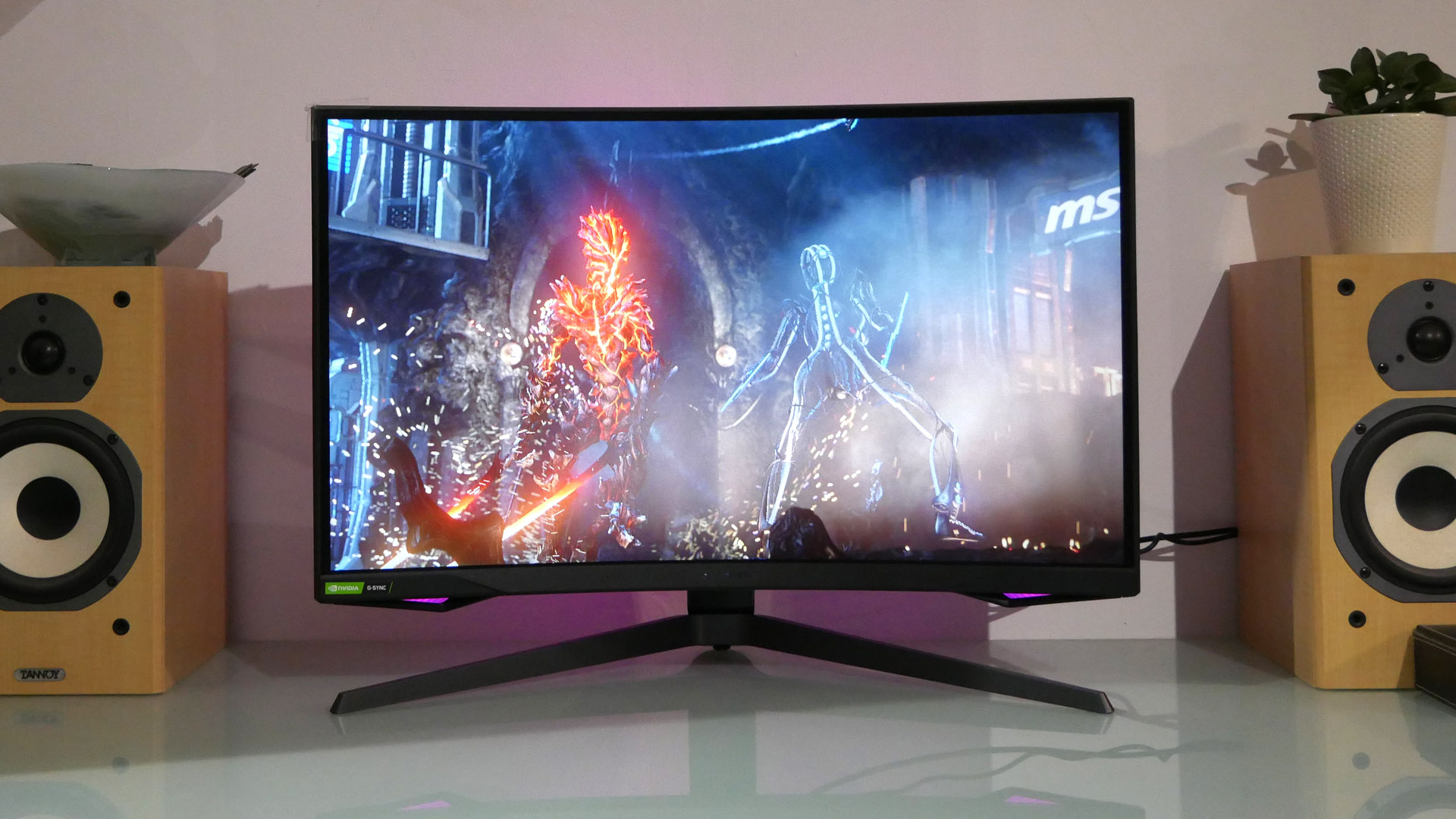GamesRadar+ Verdict
A fabulous gaming monitor that proves VA panels can be super responsive, but HDR performance disappoints.
Pros
- +
Gorgeous VA panel
- +
Super-fast response
- +
Nice design and build quality
Cons
- -
Seriously pricey
- -
Extreme curve could be too much
- -
Not a true HDR display
Why you can trust GamesRadar+
Is VA panel technology truly suitable for a bleeding-edge gaming display? That’s the conundrum facing the new Samsung Odyssey G7 C27G7. It’s a premium-priced 27-inch monitor with its work cut out convincing doubters who remember the bad old days of VA panels and associate the technology with ghastly ghosting and chronic lag. That aside, the G7 offers an awfully appealing all-round package, including 1440p resolution, high refresh, adaptive sync, and HDR support, all wrapped up in a snazzy looking chassis and finished with an aggressively curved design.
Design & Features
Speaking of LCD curvature, the G7’s super-tight 1000R panel is certainly a defining feature and arguably an opinion splitter. It’s much more curved than most equivalent monitors, which are usually in the 1500R to 1800R range. By other metrics, the G7 is more conventional, albeit at the cutting edge of convention.
The 2,560 by 1,440 native resolution is right at the sweet spot for gaming, for instance, in terms of balancing detail with high frame rates. The latter, of course, is particularly relevant given the lofty 240Hz refresh rate and 1ms response. On paper, those are very impressive figures, but the use of VA rather than TN or IPS panel technology on such a high refresh screen does raise questions. VA has traditionally been the slowest responding LCD technology. Likewise, we’ve seen other recent VA gaming monitors with claimed 1ms response that disappointed in practice.

Other highlights include adaptive sync support, with compatibility for both Nvidia G-Sync and AMD FreeSync technologies, plus VESA DisplayHDR 600 certification with local backlight dimming. Again, all very impressive on paper, and edging it into contention to be one of the best G-Sync compatible FreeSync monitors. The look and feel of the Odyssey G7 blows most gaming monitors away for quality and polish, too, an impression aided by Samsung’s funky Core LED mood lighting.
One minor demerit involves connectivity. There are HDMI and DisplayPort, making this a great choice for both PC and incoming consoles with adaptive refresh support. But the lack of USB-C connectivity could be a bummer for anyone planning on hooking up a gaming laptop, even if single-cable connectivity is unlikely to be a goer given the power requirements of a gaming portable.

Performance
By most measures, this is a fabulous gaming monitor and one that comprehensively shelves the idea that VA panels aren’t fast enough for gaming. Several levels of user-configurable overdrive are available. But even at the lowest level, this is a very quick, blur-free panel. Cranked all the way up, response rates are pretty stellar and without any ugly inverse ghosting. Impressive and worthy of comparison with the best TN monitors.

The G7 also offers natural, vibrant colours to rival any IPS monitor, plus the excellent black levels and contrast peculiar to VA tech. If that sounds like an impressive all-round performance, it absolutely is. The only snag involves HDR support. While the Samsung Odyssey G7 is HDR certified and has local dimming, that translates into just eight edge-lit vertical zones. That’s a horribly rudimentary implementation and the result is, subjectively, not a true HDR experience. Our only other concern is the extreme curve in the monitor's design. In-game, it gives a very nice wrap-around feel. Back on the Windows desktop, it can make for a slightly odd, distorted experience.

Overall - should you buy it?
Put the HDR disappointment to one side and you’re left with a fantastic, punchy, responsive SDR gaming monitor. The 27-inch proportions, 1440p resolution and 240Hz refresh will absolutely nail it for most gamers, even if we’d counsel a little care over the 1000R curve. Otherwise, the only thing preventing us making this a must-buy is pricing. This is a darn fine screen - and easily one of the best gaming monitors overall - but the price tag is a bit high for most.
A serious dissertation on the finer points of input lag and overshoot followed by a forensic examination of AI-accelerated temporal upscaling. Such is a routine day in the working life of long-time tech wordsmith, Jeremy Laird. Along with GamesRadar, Jeremy’s 15-year back catalogue includes a host of tech and gaming outlets, including TechRadar and PC Gamer, not to mention contributions to mainstream media from the Independent to the Evening Standard. Complimenting Jeremy’s debilitating addiction to all kinds of digital hardware, he is also afflicted by an obsession with and a significant occupational sideline in cars and automotive technology.




